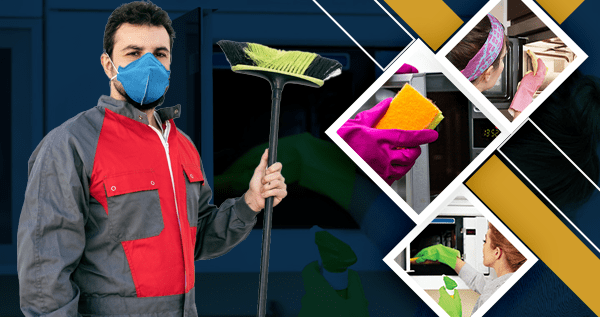Outdoor furniture is a valuable investment that enhances the beauty and functionality of your outdoor living spaces. Whether you have a cozy patio set, a luxurious garden lounge, or a sprawling dining table, proper maintenance and regular cleaning are vital to keep your outdoor furniture looking its best. In this article, we will explore the art of cleaning outdoor furniture, providing you with tips and techniques that will ensure your furniture stays in excellent condition for years to come.
Why Clean Outdoor Furniture?
Before delving into the cleaning process, let’s understand why it is essential to clean your outdoor furniture regularly. Outdoor furniture is exposed to various elements like dust, pollen, rain, sunlight, and even bird droppings. Over time, these substances can accumulate and cause damage to the furniture’s surfaces, leading to discoloration, deterioration, and ultimately shortening its lifespan.
Regular cleaning not only enhances the visual appeal of your outdoor furniture but also helps prevent the growth of mold, mildew, and other fungi that can thrive in damp or shady areas. For areas or facilities that require more thorough care, consider a deep cleaning service in Saudi Arabia to professionally address buildup and ensure long-term preservation.
Gather the Tools and Materials
Before starting the cleaning process, it is essential to gather the necessary tools and materials. Here are some items you may need:
- A bucket of warm water
- Mild dish soap or specific outdoor furniture cleaner
- A soft-bristle brush or sponge
- A garden hose with a spray nozzle
- A microfiber cloth or soft towel
- A vacuum cleaner (for cushioned furniture)
- Protective gloves and eyewear (optional)
Cleaning Different Types of Outdoor Furniture
1. Cleaning Wood Furniture
- Remove loose dirt and debris using a soft-bristle brush or a vacuum cleaner with a brush attachment.
- Mix a solution of mild dish soap and warm water in a bucket.
- Dip a soft cloth or sponge in the soapy water and gently scrub the furniture’s surface, focusing on stains or heavily soiled areas. Avoid using abrasive cleaners or scrub brushes that may damage the wood.
- Rinse the furniture thoroughly with a hose, ensuring all the soap residue is removed.
- Wipe the furniture dry with a clean microfiber cloth or a soft towel.
- Apply a protective coating such as teak oil or wood sealant to enhance the wood’s natural beauty and protect it from the elements.
2. Cleaning Metal Furniture
- Remove loose dirt and debris using a soft brush or a dry cloth.
- Fill a bucket with warm water and mild dish soap.
- Using a soft cloth or sponge, dip it into the soapy water and wipe down the metal surfaces, paying extra attention to any areas with stains or dirt buildup.
- Rinse the furniture thoroughly with a hose, ensuring all the soap residue is removed.
- Wipe the furniture dry with a clean microfiber cloth or a soft towel.
- For wrought iron furniture, you may need to repaint or touch up any areas with chipped paint to prevent rust.
3. Cleaning Plastic or Resin Furniture
- Remove loose dirt and debris using a soft brush or a dry cloth.
- Mix a solution of mild dish soap or outdoor furniture cleaner and warm water in a bucket.
- Dip a soft cloth or sponge in the soapy water and wipe down the furniture’s surface, paying attention to any stains or dirt buildup.
- Rinse the furniture thoroughly with a hose, ensuring all the soap residue is removed.
- Wipe the furniture dry with a clean microfiber cloth or a soft towel.
- You can also use a non-abrasive plastic cleaner or a mixture of vinegar and water for tougher stains.
4. Cleaning Cushioned Furniture
- Remove any loose dirt and debris from the cushions by brushing or using a vacuum cleaner with a brush attachment.
- For removable cushion covers, check the care instructions and machine wash them accordingly. If the covers are not removable, spot clean any stains using a mild detergent and a damp cloth.
- Wipe down the frame of the furniture as mentioned above based on its material.
- If the cushions are not removable or washable, you can use a mixture of mild dish soap and warm water to spot clean them. Gently scrub the cushions using a soft brush or sponge.
- Rinse the cushions thoroughly with a hose, ensuring all the soap residue is removed. Squeeze out excess water gently.
- Allow the cushions to air dry completely before positioning them back on the furniture.
General Cleaning Tips and Best Practices
- Always check the manufacturer’s instructions and recommendations for cleaning and maintenance.
- Test any cleaning solution or product on a small, inconspicuous area of the furniture before applying it to the entire surface.
- Protect your hands and eyes by wearing gloves and eyewear, especially when using chemical-based cleaners.
- Avoid using abrasive cleaners or scrub brushes that can cause scratches or damage to the furniture.
- Regularly inspect your outdoor furniture for any signs of wear, rust, or damage. Address any repairs or touch-ups promptly to prevent further deterioration.
- Consider using furniture covers or storing your outdoor furniture during harsh weather conditions or long periods of non-use.
- Set a regular cleaning schedule to ensure your outdoor furniture remains in optimal condition throughout the year.
Conclusion
As we wrap up our guide on the art of cleaning outdoor furniture, it is crucial to emphasize the importance of regular maintenance and cleaning. By following the tips and techniques discussed in this article, you can prolong the lifespan of your outdoor furniture, keep it looking stunning, and create a welcoming and comfortable outdoor oasis for yourself and your loved ones.
For broader outdoor care, including professional upkeep of surrounding landscapes and lawns, consider exploring landscaping and grounds maintenance services in Saudi Arabia to complement your clean and well-maintained furniture.















